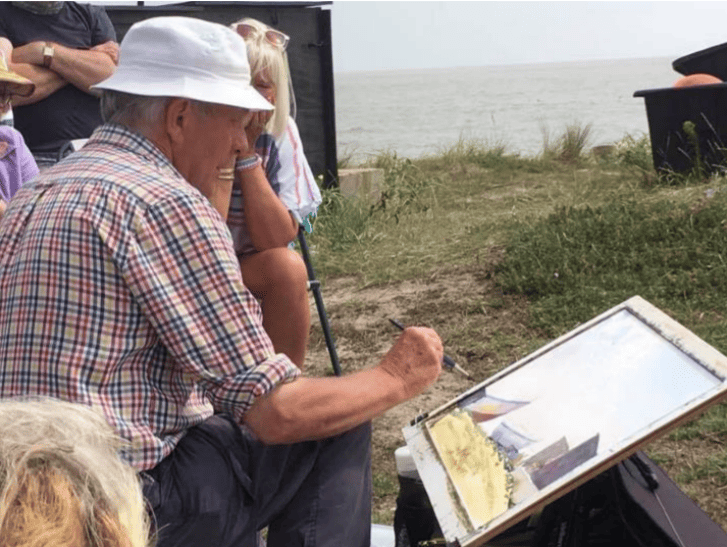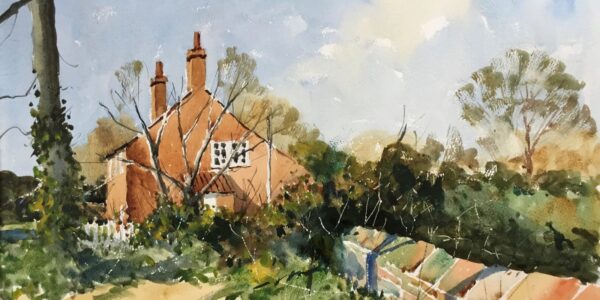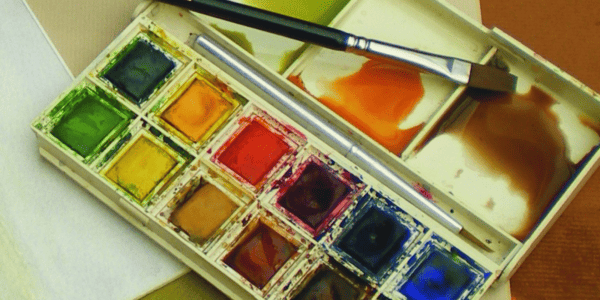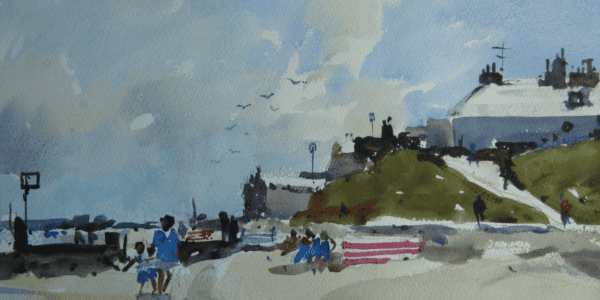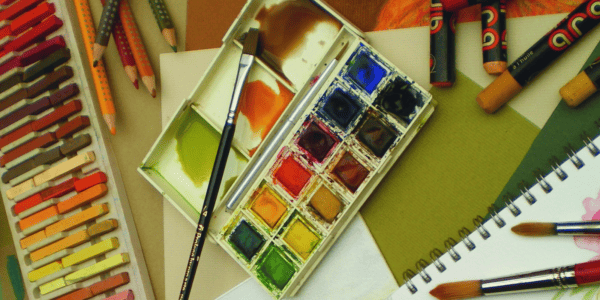The purpose of this introductory course is to explain the best way to start painting in watercolour to ensure maximum enjoyment.
A sound beginning is essential to avoid being discouraged. All the basic principles will be covered and participants will be given a guide on the simple, basic painting equipment needed. Students will be shown and then encouraged to paint simple landscapes straight away; a visual record of what they have seen to evoke the memories of a pleasant outing in the countryside. This course is for anyone interested in learning to paint in watercolour from scratch. It is designed to teach basic skills and to give you the confidence to enjoy the fascinating medium of watercolour. More experienced painters are welcome if they feel they need a fresh injection of enthusiasm.
You will be shown how to handle the materials and although watercolour can be frustrating, it is nevertheless an endlessly fascinating and enjoyable medium. The aim of the course will be to show, using practical demonstrations, how a simple straight forward painting method can be an effective way of achieving an attractive, fresh-looking watercolour painting. The purpose of demonstrations is to show students the full potential of pure watercolour and how attractive paintings can be produced by adopting a surprisingly simple and straight forward painting method. Andrew will also probably destroy many myths that seem to surround this medium.
Tutor: Andrew Pitt
Andrew Pitt has been painting landscapes since he was eleven. He has had over twenty one-man exhibitions and has been teaching and demonstrating painting techniques for over 40 years. Andrew is particularly well known for his simple, direct teaching methods and the clarity of his explanations. He has contributed many articles to The Leisure Painter magazine and has made an instruction DVD for Town House Films. He exhibits at The Serena Hall Gallery in Southwold. In his teaching he not only shows students how to paint but, more importantly, he clearly explains what he is doing and thinking as he demonstrates.
Example Timetable
The days will be divided into two sessions. In the morning Andrew will have a full teaching session involving a demonstration. After that there will be an opportunity for the students to paint – Andrew will suggest a subject, although students are welcome to use their own reference material. Andrew likes to see everyone have a go in order to identify what problems, if any, have been encountered. This is so he can address these difficulties straight away.
If the weather is suitable there will be opportunities to paint outside – again, Andrew will demonstrate how to go about painting “in the field” and will outline the necessary equipment required to make this task easy and pleasant. The other topics covered will depend on what the course participants will find useful. In the past the problem areas have been: mixing colours, particularly greens and greys, using the brush in a painterly way, how to keep your work.
What's Included
Before You Attend
What to Bring
Bring any painting equipment you already have. The following are suggestions only and describe the equipment Andrew will use. There is certainly no need to purchase everything. It is best if you are completely new to watercolour to purchase the minimum of painting materials first and see what Andrew uses. You will then be able to find out what suits you. There are several full length free-to-watch video demonstrations, including a video about painting materials on Andrew’s website: www.andrewpitt.co.uk
BRUSHES - You will need one round (very) large brush for skies and a medium and small brush that point well for detail. So three brushes, probably in the size range 3 – 12. Natural hair (sable or squirrel) is best – avoid synthetic/nylon hair if you can.
COLOURS - Either pan colours (in small plastic holders) or tube colours are
suitable – tubes are the easiest and most convenient to use. Andrew will use
the following tube colours: Ultramarine Blue, Raw Sienna, Burnt Sienna, Prussian Blue, Light Red, Burnt Umber, Cobalt Blue, Cadmium Yellow, Viridian Green, Alizarin Crimson.
Feel free to add a few personal favourites as well. They help give your painting an individual look.
PAPER - It is essential that you bring paper made specifically for watercolour painting. A suitable make called Bockingford is obtainable in most art shops.
You may also like to bring a small pad of cartridge paper for making quick
sketches and notes. Arches watercolour paper is also good with either a Not or
Rough surface. Try to use paper which is at least 140lb in weight i.e. thickness,
to ensure it doesn’t buckle when wet.
PENCILS - Please bring at least a 2B or softer (3B) pencil.
OTHER MATERIALS - Please bring a watercolour palette to hold and mix your paint in; a water bottle and water container. Bring an easel if you have one, but the Centre does provide drawing boards and table easels. A soft eraser, masking tape and tissues/kitchen roll will all be useful.
Optimists should bring a sun hat. Everyone should bring warm clothes.
OTHER ITEMS - The Centre will provide drawing boards. We also have small sketching stools and easels for hire at a small charge if required. The Centre shop stocks loose sheets of Bockingford 140lb paper.
Sorry this course has ended

